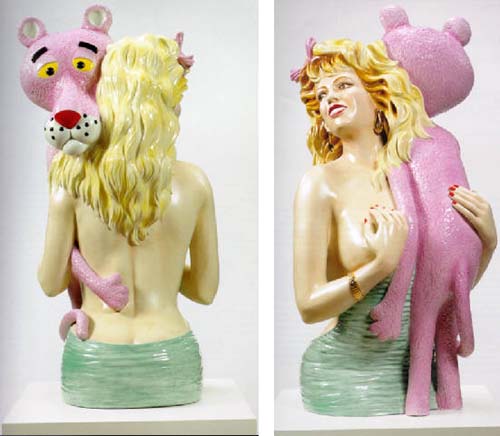Since 1993, Sorted Books has been an ongoing project in which Katchadourian goes to public or private libraries and pores through the collection of books, searching for ways to group books together. The books are arranged top down or left-to-right, their titles revealing thoughtful ponderings or clever jokes.

Akron Stacks from the Sorted Books project, C-prints, 2001
The groupings are clever in their own right, but additionally they serve as a commentary on their library's collection, revealing patterns, trends, or inconsistencies in the holdings.

Special Collections Revisited from the Sorted Books project, C-prints, 1996/2008
Beyond being linked conceptually, the visual repetition of the books and the steady staccato rhythm of titles unifies each grouping into its own comprehensive unit.

Shark Journal from the Sorted Books project, C-prints, 2001
Talking Popcorn is a sound sculpture that records the sounds of popping popcorn as Morse code and translates it into words, which are then spoken aloud and documented in a journal. The piece plays with the ideas of language and interpretation, challenging viewers to find patterns of communication even in silly, everyday objects and actions.

Talking Popcorn, Concession stand popcorn machine, microphone, laptop with custom-written Morse Code program, printed paper bags, 2001
In addition to the machine itself, each day's speech is displayed with packets of the popcorn that dictated them.

The Popcorn Journal, Vacuum-formed capsules with popcorn, printed paper and ink stamp, 2001
Also, Katchadourian chose to bronze the first pieces of "talking popcorn" along with a placard that shows the popcorn's very first word, "We."

Talking Popcorn's First Words, Bronze popcorn kernels in velvet-lined wooden box, 2001
One of Katchadourian's most famous works is likely her Mended Spiderweb Series. In 1998, she set out to repair broken spiderwebs around her home with nothing but some red thread and starch or white glue to stiffen/secure some of the longer pieces. She would work on the webs until either they were fully repaired or could no longer sustain the weight of her additions.

Mended Spiderweb #14 (Spoon Patch), 1998
Her works are fascinatingly not only for their intricacy, but also for their sense of impermanence. Beyond the typical short life of an outdoor spiderweb, her particular additions are even more short-lived due to the spiders' rejection of her work. Often she would return to the site of her webs to discover that the spider had replaced her threads with its own.

Mended Spiderweb #8 (Fish Patch), 1998
In addition to simple repairs, Katchadourian made sure to include a taste of her humor, as can be seen in her "attempt to teach spiders marketing," as seen below.

Marketing Tips for Spiders, 1998





















